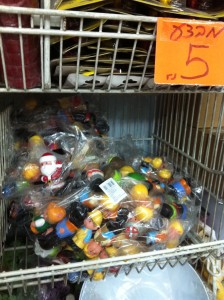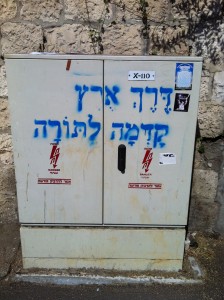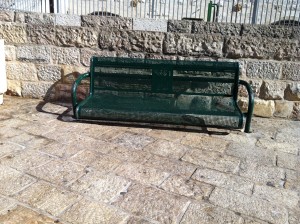Maybe the weirdest thing about being here is that, oddly enough, I have to keep reminding myself that we’re far, far away. For all the differences, there’s a lot that’s familiar. The streets of the Old City may be stone, but you’re as likely to hear English on them as Hebrew (maybe more likely). Americans abound, including the constant tour groups streaming through the squares. Other than the texts themselves, and the “Yeshivish” jargon, everything at my yeshiva is in English (most of the “foreign” flavor comes from the large number of South African students there). I get my news the same way I did at home – from the Internet – and from generally the same sources. I glance over the online Chicago Tribune, the Wall Street Journal, Facebook… I look at the Jerusalem Post site more than I used to, but most of its online stories seem to be geared for the international audience anyway. My media mix is largely unchanged, with the exception of being unable to stream WXRT (VPN, I’m looking into you soon!).
Also, when you’re a Torah-observant Jew, there are lots of familiar standbys. A shul is a shul. We’re used to services being all in Hebrew anyway. Shabbos is Shabbos. The familiar rhythm of frantic Friday errand-running, hurried showers, setting up timers, hot water, hot plate, crock pot, etc.; the sudden, forced peace that comes with lit candles and swaying brachos; family Shabbos dinner at a formal, clothed table with songs and parsha sheets; morning davening at shul, followed by lunch at home or as guests, with the usual discussion of the Torah portion, current events, and our journeys in Yiddishkeit; the leisurely afternoon, mincha, the simple-but-satisfying seuda shlishis of challah, hardboiled eggs, etc., the too-soon end with ma’ariv and havdala, bringing that back-to-work feeling… all of it transcends place.
When shul, yeshiva, and Shabbos all feel like home, it can be difficult to remember how far we’ve come. Debbie’s and the boys’ experience is totally different, as they deal much more with Jerusalem as a new, foreign place. But I find myself sometimes jarred when I look up past the stone and catch a view of the Mount of Olives or a similar, undeniably foreign landscape, and remember that I am There.
Like this:
Like Loading...




